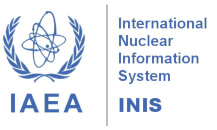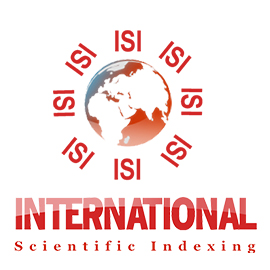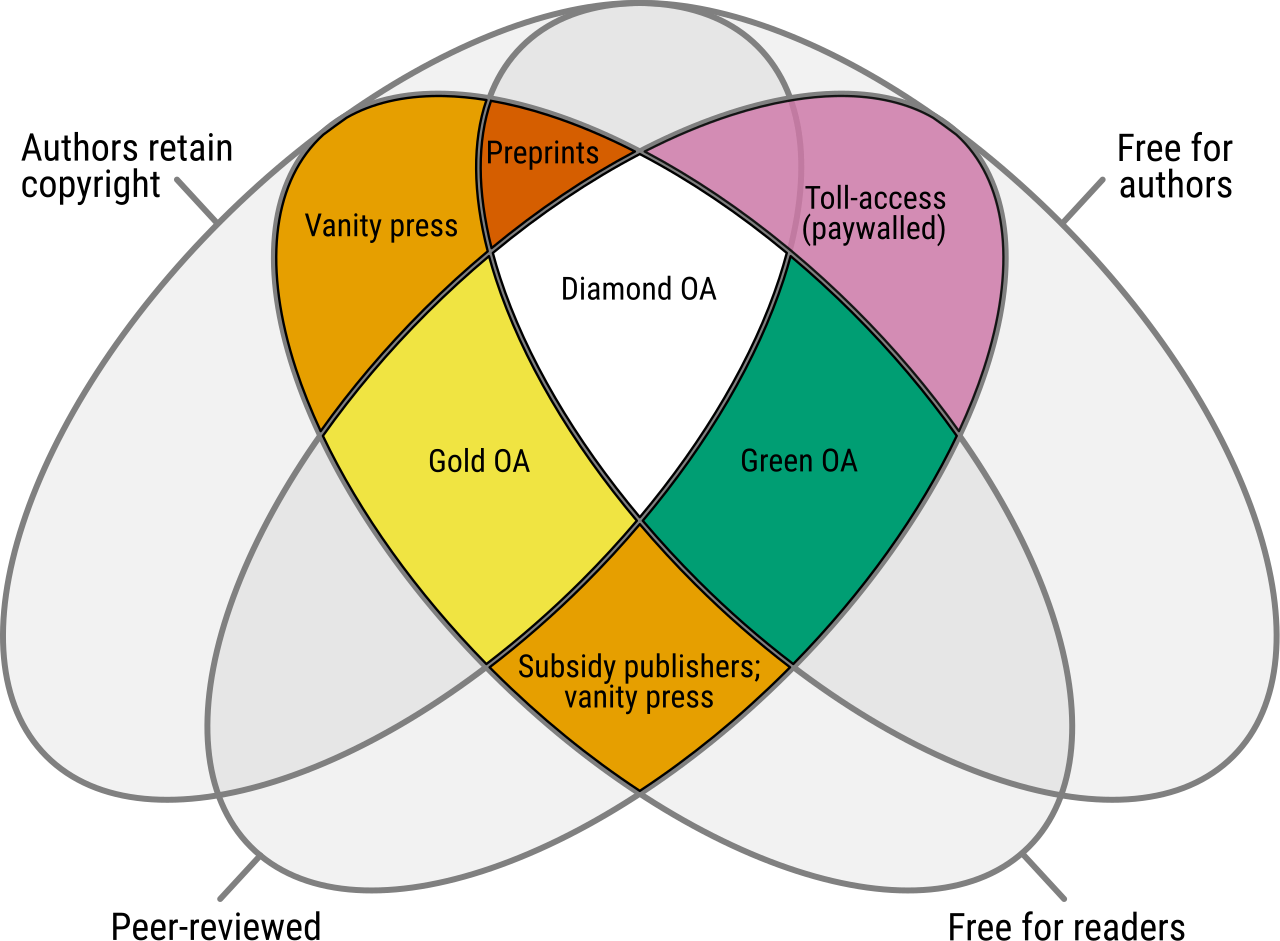Análise da relação dose absorvida e seu efeito em materiais vegetais: uma revisão de literatura
DOI:
https://doi.org/10.15392/2319-0612.2025.2917Palavras-chave:
fitoterápicos, radiação gama, metabólitos secundáriosResumo
A radiação gama tem sido amplamente explorada como um agente físico capaz de modificar o metabolismo vegetal. Seu efeito sobre a biossíntese de metabólitos secundários, essenciais para a defesa, adaptação e ação terapêutica das plantas, tem despertado crescente interesse nas pesquisas fitoquímicas e farmacológicas. Este estudo teve como objetivo revisar sistematicamente os efeitos da radiação gama sobre os metabólitos secundários de origem vegetal, destacando as relações dose-resposta e suas possíveis aplicações biotecnológicas. Foi realizada uma revisão da literatura nas bases de dados PubMed, SciELO e BVS, considerando estudos publicados entre 2019 e 2024. Utilizaram-se os descritores "radiação gama", "metabólitos secundários" e "materiais vegetais". Após aplicação dos critérios de elegibilidade, foram selecionados 23 estudos. Os estudos analisados demonstraram que a radiação gama influencia a produção de diversos metabólitos secundários, como fenóis, flavonoides, terpenos, alcaloides e saponinas. A maioria dos resultados indica que doses de (5–100 Gy) promovem o aumento da síntese de compostos bioativos com propriedades antioxidantes, antimicrobianas e anticancerígenas. Por outro lado, doses mais elevadas tendem a apresentar efeitos inibitórios ou tóxicos. As respostas variaram significativamente entre espécies vegetais e classes de compostos. A radiação gama apresenta potencial promissor para otimizar a produção de fitocompostos de alto valor terapêutico. No entanto, a ausência de perfis dose-resposta padronizados e a compreensão limitada dos mecanismos moleculares envolvidos reforçam a necessidade de mais pesquisas multidisciplinares para aplicação segura e eficaz dessa tecnologia no desenvolvimento de fitoterápicos.
Downloads
Referências
[1] MSHELIA, P. W.; DIBAL, H. U.; CHIROMA, D. Food irradiation: A review of its applications, benefits and concerns. Environmental Science and Pollution Research, 2023.
[2] SOARES, I. G. M.; SANTOS, A. G. dos; SOARES, J. J. C.; ARAÚJO, L. A.; MAIA NETO, L. S.; SILVA, L. M.; AMARAL, A. J.; MAGNATA, S. S. L. P.; SILVA, E. B. da. Influência da radiação ionizante nos frutos de tomate (Lycopersicon esculentum Mill) da variedade TY 2006. Caderno Pedagógico, v. 21, n. 13, e11903, 2024. https://doi.org/10.54033/cadpedv21n13-180. DOI: https://doi.org/10.54033/cadpedv21n13-180
[3] LORO, A. C.; BOTTEON, V. W.; SPOTO, M. H. F. Quality parameters of tomatoes submitted to different doses of gamma radiation. Brazilian Journal of Food Technology, v. 21, e2017168, 2018. https://doi.org/10.1590/1981-6723.16817. DOI: https://doi.org/10.1590/1981-6723.16817
[4] ARAÚJO, L. A.; LIMA, C. E. P. F.; MELO, Alexciana Pereira; SILVA, Edvane Borges da. Gamma irradiation in different maturity stages of tomatoes (Lycopersicon esculentum mill.). European Academic Research, v. X, n. 8, p. 3114–3124, nov. 2022. Disponível em: www.euacademic.org.
[5] BHATNAGAR, P.; GURURANI, P.; BISHT, B.; KUMAR, V.; KUMAR, N.; JOSHI, R.; VLASKIN, M. S. Impact of irradiation on physico-chemical and nutritional properties of fruits and vegetables: A mini review. Heliyon, v. 8, p. e10918, 2022. Disponível em: https://doi.org/10.1016/j.heliyon.2022.e10918. DOI: https://doi.org/10.1016/j.heliyon.2022.e10918
[6] Ravindran R, Jaiswal AK. Wholesomeness and safety aspects of irradiated foods. Food Chem. 2019 Jul 1;285:363–8. doi:10.1016/j.foodchem.2019.02.002 DOI: https://doi.org/10.1016/j.foodchem.2019.02.002
[7] ZIN, MM; ANUCHA, CB; BÁNVÖLGYI, S. Recovery of Phytochemicals via Electromagnetic Irradiation (Microwave-Assisted-Extraction): Betalain and Phenolic Compounds in Perspective. Foods, v. 9, n. 918, 2020. Disponível em: https://doi.org/10.3390/foods9070918. DOI: https://doi.org/10.3390/foods9070918
[8] JADHAV, HB; ANNAPURE, US.; DESHMUKH, RR. Non-thermal Technologies for Food Processing. Frontiers in Nutrition, v. 8, 2021. Disponível em: https://doi.org/10.3389/fnut.2021.657090. DOI: https://doi.org/10.3389/fnut.2021.657090
[9] MURTHY, H. N.; JOSEPH, K. S.; PAEK, K. Y.; PARK, S. Y. Production of specialized metabolites in plant cell and organo-cultures: the role of gamma radiation in eliciting secondary metabolism. International Journal of Radiation Biology, v. 100, n. 7, p. 678-688, 2024. Disponível em: https://doi.org/10.1080/09553002.2024.2324469. DOI: https://doi.org/10.1080/09553002.2024.2324469
[10] TARIVERDIZADEH N, HOSSEINI SM, GHOLAMI M, ALIZADEH H. Response of Satureja hortensis L. to gamma radiation and its impact on secondary metabolite content and biochemical characteristics. International Journal of Radiation Biology, v. 99, n. 7, p. 1424-1432, 2023. Disponível em: https://doi.org/10.1080/09553002.2023.2173821. DOI: https://doi.org/10.1080/09553002.2023.2173821
[11] MUJIB A, KHAN M, ALI M, ALI H, AHMAD I, KHAN M. Gamma ray irradiation elicits secondary metabolite production in Catharanthus roseus embryogenic callus. Applied Microbiology and Biotechnology, v. 106, p. 6109–6123, 2022. DOI: 10.1007/s00253-022-12122-7. DOI: https://doi.org/10.1007/s00253-022-12122-7
[12] MUHALLILIN, I.; AISYAH, S. I.; SUKMA, D. The diversity of morphological characteristics and chemical content of Celosia cristata plantlets due to gamma ray irradiation. Biodiversitas, v. 20, n. 3, p. 862-866, 2019. DOI: 10.13057/biodiv/d200333. DOI: https://doi.org/10.13057/biodiv/d200333
[13] PARCHIN RA, SEIFI HS, AMANI S, GHORBANI M, ABBASPOUR H. Growth characteristics and phytochemical responses of Iranian fenugreek (Trigonella foenum-graecum L.) exposed to gamma irradiation. Industrial Crops & Products, v. 139, p. 111593, 2019. DOI: 10.1016/j.indcrop.2019.111593. DOI: https://doi.org/10.1016/j.indcrop.2019.111593
[14] MARIADOSS, A.; SATDIVE, R.; FULZELE, D. P.; RAMAMOORTHY, S. Enhanced production of anthraquinones by gamma-irradiated cell cultures of Rubia cordifolia in a bioreactor. Industrial Crops & Products, v. 145, p. 111987, 2020. DOI: 10.1016/j.indcrop.2019.111987. DOI: https://doi.org/10.1016/j.indcrop.2019.111987
[15] KHALIFA, A. M.; ABD-ELSHAFY, E.; ABU-KHUDIR, R.; GAAFAR, R. M. Influence of gamma radiation and phenylalanine on secondary metabolites in callus cultures of milk thistle (Silybum marianum L.). Journal of Genetic Engineering and Biotechnology, v. 20, p. 166, 2022. DOI: 10.1186/s43141-022-00424-2. DOI: https://doi.org/10.1186/s43141-022-00424-2
[16] HONG, M. J.; KO, C. S.; KIM, J.-B.; KIM, D. Y. Identification and transcriptomic profiling of salinity stress response genes in colored wheat mutant. PeerJ, v. 12, e17043, 2024. DOI: 10.7717/peerj.17043. DOI: https://doi.org/10.7717/peerj.17043
[17] EL-GARHY H A S, EL-METWALY N M, EL-KHAWAGA A M, ABOU EL-MAGD A M, MOSTAFA M E, EL-SHERBENY M A. Effect of gamma rays and colchicine on silymarin production in cell suspension cultures of Silybum marianum: A transcriptomic study of key genes involved in the biosynthetic pathway. Gene, v. 791, p. 145700, 2021. Disponível em: https://doi.org/10.1016/j.gene.2021.145700. DOI: https://doi.org/10.1016/j.gene.2021.145700
[18] SINGH, S.; SHARMA, V.; KUMAR, R.; RAGHUVANSHI, R.; CHANDRA, R. Gamma ray–induced tissue responses and improved secondary metabolites accumulation in Catharanthus roseus. Applied Genetics and Molecular Biotechnology, v. 106, p. 6109–6123, 2022. DOI: https://doi.org/10.1007/s00253-022-12122-7
[19] GAJBAR T D, PATEL K S, KHAN Z A, RAZA S, KHAN M M, HUSSAIN M I. Gamma-irradiated fenugreek extracts mediates resistance to rice blast disease through modulating histochemical and biochemical changes. Analytical Biochemistry, v. 618, p. 114121, 2021. Disponível em: https://doi.org/10.1016/j.ab.2021.114121. DOI: https://doi.org/10.1016/j.ab.2021.114121
[20] SILVA, A. B.; SOUZA, C. D.; OLIVEIRA, E. F. Influência da radiação gama na qualidade pós-colheita e metabolismo secundário da romã ‘Comum’. Revista Brasileira de Tecnologia Agroindustrial, v. 10, n. 3, p. 45-60, 2023.
[21] PAGLIARELLO, R.; BENNICI, E.; DI SARCINA, I.; VILLANI, M. E.; DESIDERIO, A.; NARDI, L.; BENVENUTO, E.; CEMMI, A.; MASSA, S. Effects of gamma radiation on engineered tomato biofortified for space agriculture by morphometry and fluorescence-based indices. Frontiers in Plant Science, v. 14, p. 1266199, 2023. DOI: 10.3389/fpls.2023.1266199. DOI: https://doi.org/10.3389/fpls.2023.1266199
[22] RIVIELLO-FLORES MDLL, SANTOS MCO, MARTÍNEZ-SÁNCHEZ F, GARCÍA-CORONADO MJ, PÉREZ-HERRERA L, LÓPEZ-MORENO A, et al. Use of Gamma Radiation for the Genetic Improvement of Underutilized Plant Varieties.Plants.2022;11(9):1161.Disponívelem:https://doi.org/10.3390/plants11091161. DOI: https://doi.org/10.3390/plants11091161
[23] ARSHADI, Z; HOSSEINI, SA; FATEHI, D; MIRZAEI, SA; ELAHIAN, F. Butylcycloheptylprodigiosin and undecylprodigiosin are potential photosensitizer candidates for photodynamic cancer therapy. Molecular Biology Reports, v. 48, p. 5965–5975, 2021. DOI: 10.1007/s11033-021-06621-2. DOI: https://doi.org/10.1007/s11033-021-06598-1
[24] CIOCAN AG, TUDOR C, CREȚU D, POPESCU D, RÂPĂ M, ANDRONESCU E . The Impact of Acute Low-Dose Gamma Irradiation on Biomass Accumulation and Secondary Metabolites Production in Cotinus coggygria Scop. and Fragaria × ananassa Duch. Red Callus Cultures. Metabolites. 2023 Aug 15;13(8):894. doi:10.3390/metabo13080894.Availablefrom:https://doi.org/10.3390/metabo13080894 DOI: https://doi.org/10.3390/metabo13080894
[25] KORDROSTAMI, M; SANJARIAN, F; SHAHBAZI, S; GHASEMI-SOLOKLUI, AK. Exploring low-dose gamma radiation effects on monoterpene biosynthesis in Thymus vulgaris: insights into plant defense mechanisms. Environmental Science and Pollution Research, v. 31, p. 32842–32862, 2024. Disponível em: https://doi.org/10.1007/s11356-024-30491-7. DOI: https://doi.org/10.1007/s11356-024-33269-y
[26] MADUREIRA J., DIAS M.I., PINELA J., CALHELHA R.C., BARROS L., SANTOS-BUELGA C., MARGAÇA F.M.A., FERREIRA I.C.F.R., CABO VERDE S. The use of gamma radiation for extractability improvement of bioactive compounds in olive oil wastes. Science of the Total Environment. 2020;746:138706. doi:10.1016/j.scitotenv.2020.138706. DOI: https://doi.org/10.1016/j.scitotenv.2020.138706
[27] HEYDARI, H. R.; CHAMANI, E.; ESMAIELPOUR, B. Carbon nanotubes elicitation enhanced phenolic compounds accumulation in Salvia nemorosa cell culture. Plant Cell, Tissue and Organ Culture (PCTOC), v. 142, p. 353–367, 2020. DOI: 10.1007/s11240-020-01830-w. DOI: https://doi.org/10.1007/s11240-020-01867-6
[28] ROSTAMI M, GHORBANI A, SHAHBAZI S. Gamma radiation-induced enhancement of biocontrol agents for plant disease management. Curr Res Microb Sci. 2024 Nov 7;7:100308. doi:10.1016/j.crmicr.2024.100308. DOI: https://doi.org/10.1016/j.crmicr.2024.100308
[29] KATIYAR, P.; PANDEY, N.; KESHAVKANT, S. Gamma radiation: A potential tool for abiotic stress mitigation and management of agroecosystem. Plant Stress, v. 5, p. 100089, 2022. DOI: 10.1016/j.stress.2022.100089. DOI: https://doi.org/10.1016/j.stress.2022.100089
[30] LE, K. C.; HO, T.; PAEK, K.; PARK, S. Low dose gamma radiation increases the biomass and ginsenoside content of callus and adventitious root cultures of wild ginseng (Panax ginseng Mayer). Industrial Crops and Products, v. 129, p. 631-639, 2019. DOI: 10.1016/j.indcrop.2018.12.056. DOI: https://doi.org/10.1016/j.indcrop.2018.12.056
[31] MAGDY AM, FAHMY EM, AL‑ANSARY AEMF, AWAD G. Improvement of 6‑gingerol production in ginger rhizomes (Zingiber officinale Roscoe) plants by mutation breeding using gamma irradiation. Appl Radiat Isot. 2020 Aug;162:109193. doi:10.1016/j.apradiso.2020.109193 DOI: https://doi.org/10.1016/j.apradiso.2020.109193
Downloads
Publicado
Edição
Seção
Categorias
Licença
Direitos autorais (c) 2025 Mario Mardone da Silva, Ewerton Clementino Diniz, Luiz da Silva Maia Neto, Liderlanio de Almeida Araújo, Simey de Souza Leão Pereira Magnata, Ademir de Jesus Amaral, Andre Maciel Netto, Edvane Borges da Silva

Este trabalho está licenciado sob uma licença Creative Commons Attribution 4.0 International License.
Declaro que o presente artigo é original, não tendo sido submetido à publicação em qualquer outro periódico nacional ou internacional, quer seja em parte ou em sua totalidade. Declaro, ainda, que uma vez publicado na revista Brazilian Journal of Radiation Sciences, editada pela Sociedade Brasileira de Proteção Radiológica, o mesmo jamais será submetido por mim ou por qualquer um dos demais co-autores a qualquer outro periódico. Através deste instrumento, em meu nome e em nome dos demais co-autores, porventura existentes, cedo os direitos autorais do referido artigo à Sociedade Brasileira de Proteção Radiológica, que está autorizada a publicá-lo em meio impresso, digital, ou outro existente, sem retribuição financeira para os autores.
Licença
Os artigos do BJRS são licenciados sob uma Creative Commons Atribuição 4.0 Licença Internacional, que permite o uso, compartilhamento, adaptação, distribuição e reprodução em qualquer meio ou formato, desde que você dê o devido crédito ao (s) autor (es) original (is) e à fonte, forneça um link para a licença Creative Commons, e indique se mudanças foram feitas. As imagens ou outro material de terceiros neste artigo estão incluídos na licença Creative Commons do artigo, a menos que indicado de outra forma em uma linha de crédito para o material. Se o material não estiver incluído no licença Creative Commons do artigo e seu uso pretendido não é permitido por regulamentação legal ou excede o uso permitido, você precisará obter permissão diretamente do detentor dos direitos autorais. Para visualizar uma cópia desta licença, visite http://creativecommons.org/licenses/by/4.0/






















